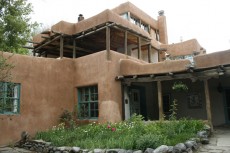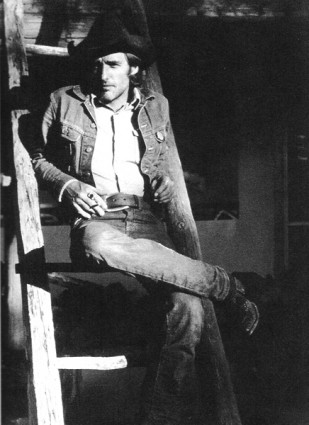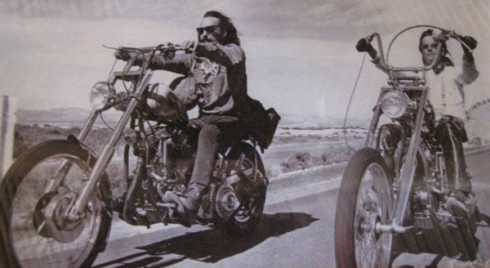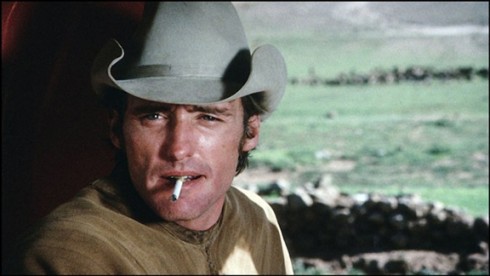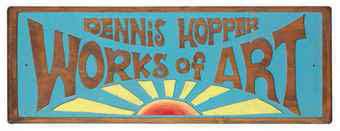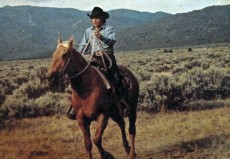by Elizabeth Cunningham
Number two of a four-part serial on the history of the Mabel Dodge Luhan House. Beginning with Mabel, this overview profiles each of the successive owners and their accomplishments.
“Los Gallos” interim: 1962-1970
After Mabel’s death in 1962, her son John Evans inherited “Los Gallos” and moved into the Big House. Five years later he put the estate up for sale.When the property failed to sell, Evans persuaded his daughter Bonnie to take on ownership. She moved into the Big House in 1968. Two years later Bonnie sold the place and all its furnishings to Dennis Hopper. He intended it as a center of creativity. Before he could move in, the Big House required modernization. With the help of local tradesmen and skilled craftsmen from Taos Pueblo, Hopper’s brother David supervised reconstruction, including repairs to the adobe structure along with electrical and plumbing updates.
Dennis Hopper and the “Mud Palace”: 1970-1978
Dennis Hopper discovered Mabel’s house while shooting the film Easy Rider. In 1970 he purchased Los Gallos from Mabel’s granddaughter Bonnie Evans, and left Los Angeles to live in Taos. He spent the next years editing his latest film The Last Movie. With a vision of establishing Taos as the American center of independent filmmaking, Hopper invited creatives from his sphere to stay at the “Mud Palace.” The Big House with its ten bedrooms provided the perfect venue for the cross-pollination of ideas. Paralleling Mabel’s movers and shakers of the 1920s, his visitors were an equally eclectic mixture. Many embodied the 1960s counterculture that Hopper referenced in Easy Rider. Among the more notable guests were musicians Bob Dylan, Joni Mitchell and Bo Diddley, actors Jack Nicholson, Anthony Quinn and John Wayne, beat poet Alan Watts, and politicians George McGovern (who announced his candidacy for President at Hopper’s dining room table) and New Mexico governor David Cargo. Personages from Mabel’s era like Georgia O’Keeffe also dropped by. Dorothy Brett first visited Hopper to see what he had done to her friend’s house. She regaled him with stories of the good old days with Mabel, D.H. and Frieda Lawrence and other characters.
Before moving to Taos, Hopper had established himself as an actor, artist, photographer and art collector in L. A. Prior to his directorial debut with Easy Rider, Hopper had acted in various movies alongside seasoned actors like Marlon Brando, Paul Newman and James Dean. In fact, it was Dean who influenced Hopper’s photography. Seeing Hopper taking pictures one day, the older actor advised him never to crop his photos. He predicted that Hopper would one day direct movies; for that he would need to see and shoot pictures full frame.
In his budding years as an artist Hopper considered himself among California’s third-generation abstract expressionists. He showed his assemblages and photos at contemporary galleries in Los Angeles beginning in the 1960s. Through his connection at Ferus Gallery he first encountered the work of Andy Warhol and Roy Lichtenstein. Fired up by fresh, new paintings that embodied the “return to reality,” Hopper flew to New York. He visited Warhol’s studio, and met Liechtenstein, Jasper Johns and other Pop artists. The purchase of Liechtenstein’s iconic Sinking Sun and one of “Andy’s soup cans” launched Hopper’s lifelong passion for collecting. The subject of a later Warhol painting, Hopper would collaborate with his friend making experimental films. He would also assemble a distinctive and comprehensive collection of contemporary art.
From childhood Hopper had believed that being an artist encompassed painting, acting, music and writing. Established in these creative arts, he applied them to making films. Easy Rider, the first serious film on the counterculture, addressed drug use, hippies and communal lifestyle. In the same breath, it criticized social tensions and issues that were part of the 1960s in the United States. With this film Hopper brought independent filmmaking into the mainstream.
Building on the success of Easy Rider, Hopper directed and acted in his next cinematic endeavor, The Last Movie. Besides Peter Fonda, co-stars included other young actors like Kris Kristofferson, Dean Stockwell and Michelle Phillips of the Mamas and the Papas. Singer-songwriter Leonard Cohen, another of Hopper’s Taos guests, wrote lyrics for songs used in the soundtrack. Backed by Universal Pictures, Hopper shot the film in Peru in early 1970. When he returned to the Mud Palace in June, he spent the next twelve months in the editing facility his brother David had created in the remodeled log cabin (a school room in the Big House during Mabel’s era). Inspired by European avant-garde films, especially Jean Luc Goddard’s Breathless, Hopper combined a bold visual style with non-linear storytelling and fragmented editing—including the use of jarring jump cuts to abruptly communicate the passage of time.
To screen various cuts of the movie as he was working on it, Hopper purchased the El Cortez, an old movie theater across from the renowned San Francisco de Asis church in Ranchos de Taos. At night he showed the latest avant-garde and art house films from foreign directors like Ingmar Bergman, Federico Fellini and François Truffaut. Some of these movies shocked a rural populace still rooted in Victorian values. Perhaps offering free Saturday showings of Disney cartoons for the neighborhood children helped make amends.
Although Hopper considered The Last Movie one of the most important films made in America, U. S. critics savaged it. In order to distribute the film, Universal Pictures required Hopper to re-edit it. When he refused, they shelved the project. There was one consolation: winning the Venice Film Festival’s prestigious C.I.D.A.L.C. Award.
Interestingly, one of devices used in the picture—a movie-within-a-movie—happened in real life. While Hopper was editing The Last Movie, photojournalist Lawrence Schiller and screenwriter L. M. “Kit” Carson arrived in Taos to shoot a documentary on him. As an aspiring director, Schiller’s intent was to reveal the actor’s authentic self. The result was The American Dreamer, starring Hopper, who besides acting in the film was credited as co-writer.
Disenfranchised by Hollywood, Hopper abandoned filmmaking for his art. In 1972 he opened Dennis Hopper Works of Art gallery. He curated shows with legendary openings attended by the likes of Allen Ginsberg and Kris Kristofferson. His efforts to introduce Warhol, Ken Price and other edgy artists in his collection to the greater Taos community met with failure. The work was too extreme for the town.
Hopper then helped his brother David, who with his wife Charlotte operated the Return Gallery. From 1977 to 1985 Dennis and several of his illustrious friends supported this cooperative of first-rate Hispanic, Indian and Anglo artists and artisans. Several of those who showed there—weaver Rachel Brown, master engraver and illustrator Ed Morgan, painter Douglas Johnson, silversmiths Pepe Rochon and Larry Herrera, photographer Gail Russell, and sculptor John Suazo from Taos Pueblo—pursued successful art careers. Return Gallery also featured a series of Dennis Hopper’s abstract paintings in a 1984 solo show.
After finishing The Last Movie, issues with freeloaders—strangers to Hopper—caused him to move out of the Big House. Seeking sanctuary, he rented the house that Mabel’s husband Tony Lujan had built on adjacent Taos Pueblo land.
The 1970s—marked by problems with substance abuse, political and social turmoil of northern New Mexico, and the loss of the Mud Palace—were difficult years for Hopper. In 1978 he listed the Mud Palace for sale. While abroad in Germany, he learned that it had sold. The news surprised him; he thought that he had taken the property off the market. By the time he realized his mistake, it was too late. This place and Taos, however, left an indelible impression. As his daughter Marin Hopper stated “It was the place that gave him the creative freedom he desired throughout his life.”
Author’s note:
In researching Dennis Hopper’s time in Taos, providing context for a broader portrayal became imperative. Much of what I found centered on sensationalism and fixed on wild times and Hopper’s infant terrible persona. What I discovered was an intelligent, talented man who made numerous contributions to the cultural history of the United States. Among my favorite written pieces on Hopper were the articles “Destiny in Taos,” Marin Hopper’s forthright portrayal of her father, and “Great Conversations: Dennis Hopper,” an insightful interview by Alex Simon, Co-editor, The Hollywood Interview.com. For Hopper’s time in Taos grounded in historical context, Dr. Lois Palken Rudnick’s Utopian Vistas: The Mabel Dodge Luhan House and the American Counterculture remains unexcelled.
Several people assisted with information and photos incorporated into this blog piece. Hearty appreciation to Nancy Neva Gagliano; Walter Chappell Archive; Marin Hopper, Christopher Santacroce, Siobhan Sanders, Hopper Art Trust, and Hopper Goods; Charlotte Hopper, Lois Rudnick, and Noreen Perrin and the staff at the Mabel Dodge Luhan House.
